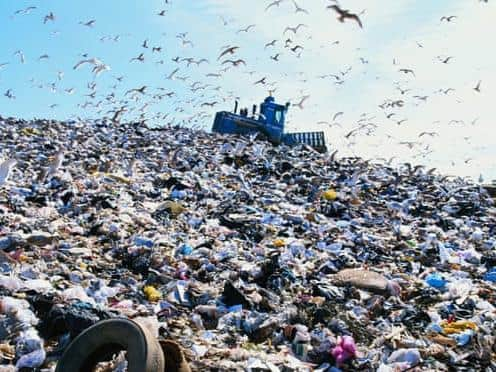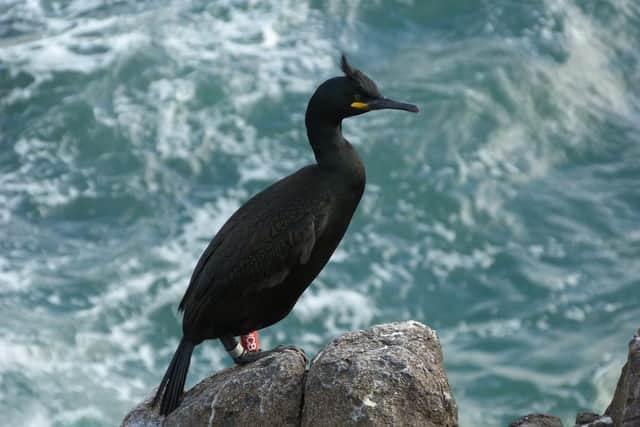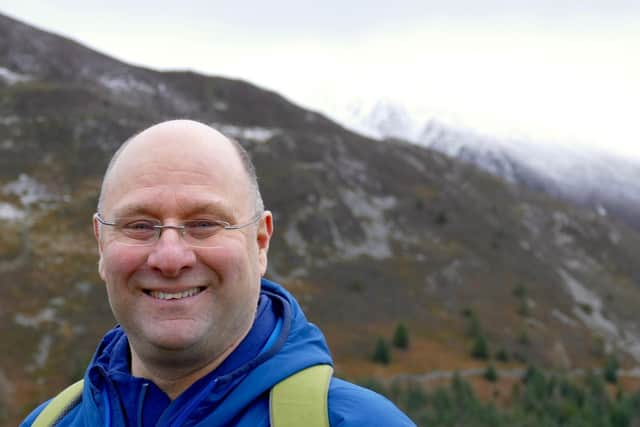How the University of York will tackle the toll of landfill waste on seabirds
The effects that chemical pollutants from coastal landfill waste may be having on UK seabirds’ health, reproduction and survival will be studied by researchers from the University of York.
Scientists say the results from the study will inform waste and chemical management policies in coastal regions across the UK.


Advertisement
Hide AdAdvertisement
Hide AdAs part of the innovative study the researchers will look at the impact on European shags specifically because they may have a high exposure to pollutants from disused waste sites.
The species of bird feed in coastal areas and eat fish that live at the bottom of the sea, where many of these pollutants accumulate.
The researchers will compare the health and survival rates of shags on both the Isle of May and Inchkeith island.
The Isle of May is farther from the main sources of pollutants than Inchkeith, so its seabird populations are expected to be less exposed to chemicals from waste.


Advertisement
Hide AdAdvertisement
Hide AdProfessor Alistair Boxall, part of the project team from the University of York, said: "There are thousands of old waste sites around the UK. As these weren't subject to the regulations and controls that we have today, there is evidence that toxic substances are leaching from some of these sites into rivers, groundwaters and coastal systems.
"Our study will help us to understand the scale of the problem and help identify how to manage these sites into the future to prevent harm to the natural environment."
The team will also compare results between birds that spend the whole year in the Firth of Forth with those that migrate to other locations in winter and may experience different levels of exposure to contaminants.
To study the effects of chemicals on seabirds the scientists will compare the concentrations of different pollutants in each bird with its condition and survival, as well as that of its offspring.


Advertisement
Hide AdAdvertisement
Hide Ad“Wildlife and ecosystems in the Firth of Forth are exposed to a complex mixture of chemicals originating from waste, produced by the large number of people living close to the coast,” said Professor Boxall from the university's Department of Environment and Geography.
The project is a collaboration with the UK Centre for Ecology & Hydrology (UKCEH) and is funded by the Natural Environment Research Council (NERC),
Dr Francis Daunt of UKCEH, who is leading the project, stressed the need for the new resarch due to populations of many species of UK seabirds such as shags, kittiwakes and guillemots struggling due to climate change.
He highlighted reduced prey availability due to warming sea temperatures and fatalities caused by more severe storms.
Advertisement
Hide AdAdvertisement
Hide AdDr Daunt said: “Therefore, it is particularly important to understand the impacts of the additional threat posed by contaminants from waste.
“Persistent toxic chemicals can transfer and accumulate through the aquatic food web, and there is particular concern for the wellbeing of seabirds as top predators.
They can also ingest pollutants in water or sediment directly while foraging for prey.”
Landfill sites
The waste that humans produce and send to landfill sites contains a cocktail of chemicals, including unused medicines, pesticides, flame retardants, metals and plastics, many of which are toxic to organisms in the environment.
Advertisement
Hide AdAdvertisement
Hide AdThere are more than 2,000 known former and operational coastal landfill sites in the UK.
There is a particular problem with so-called ‘legacy waste’ from older sites that were poorly constructed and managed, with no strategies in place to prevent pollutants entering the environment.
